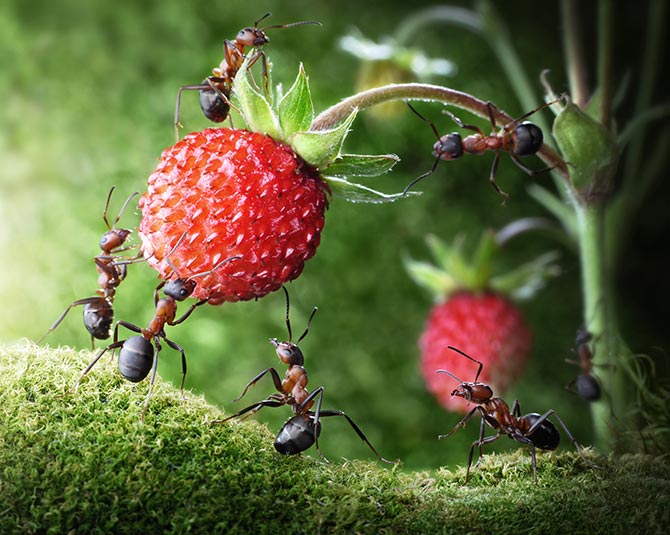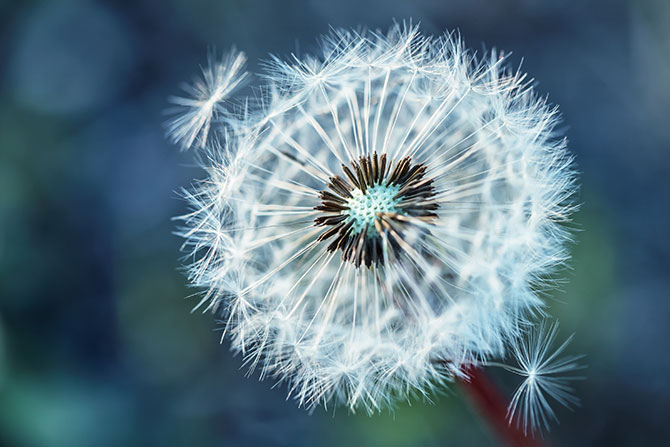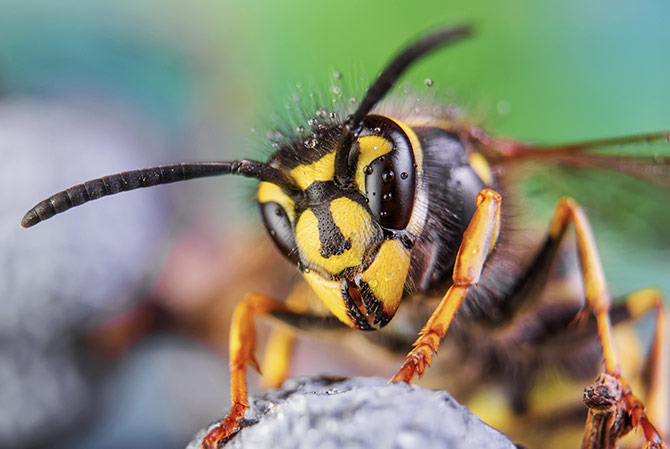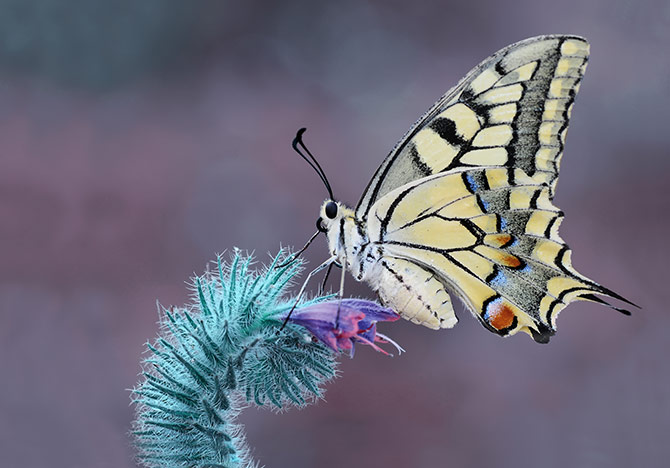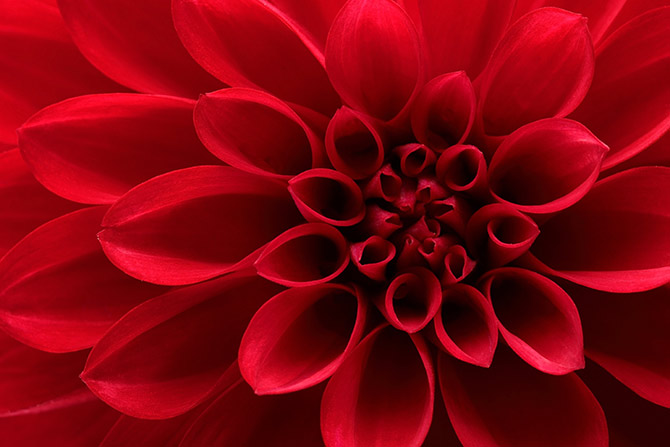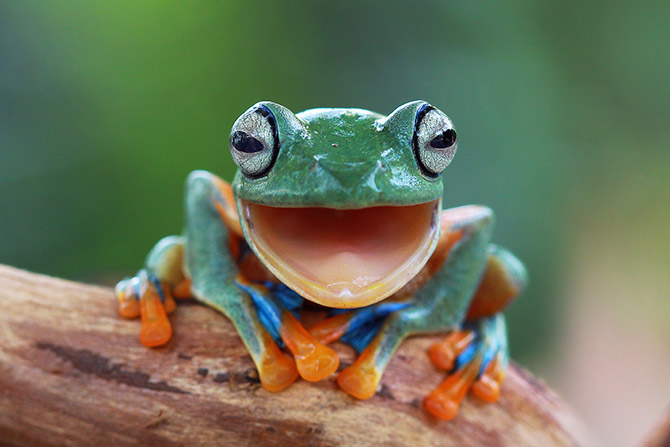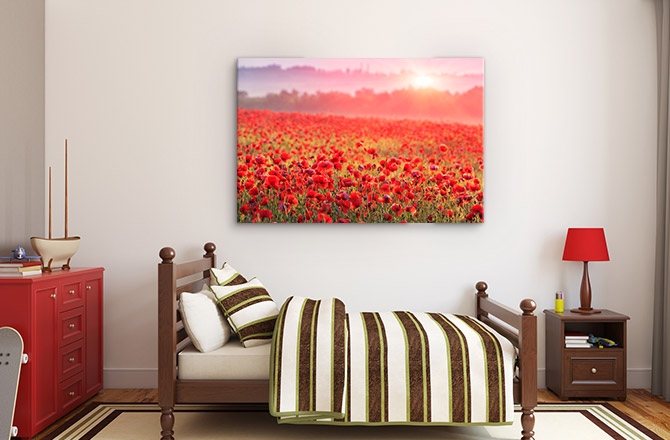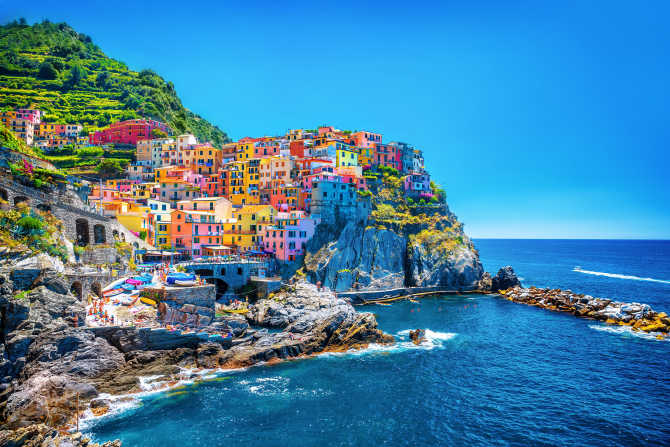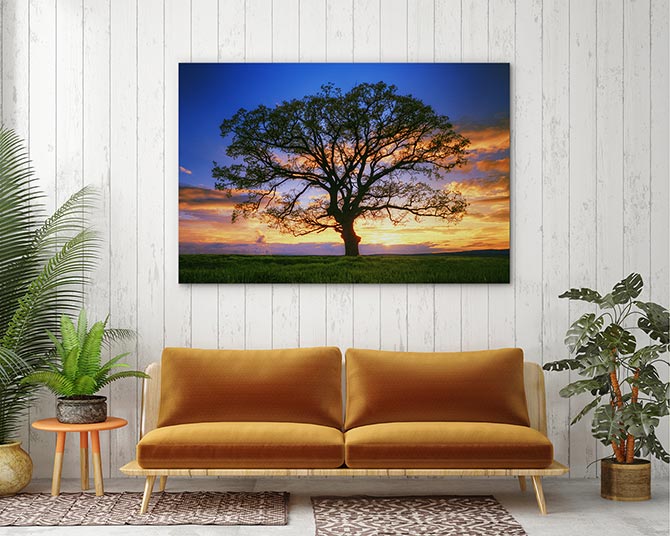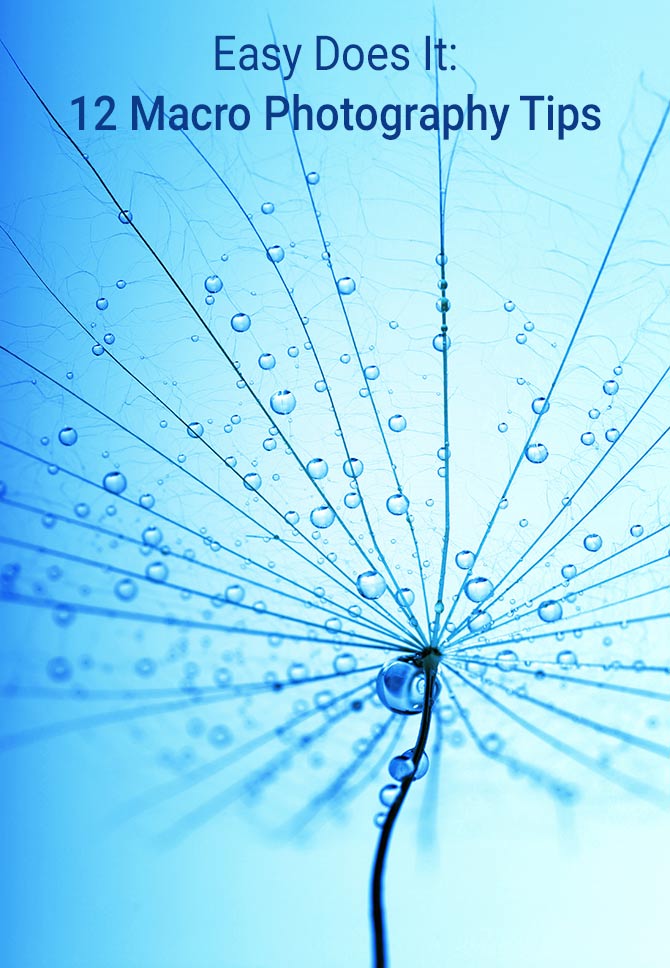
The wonders of macro photography often seem so mysterious, we tend to think of it as something supremely magical; outside the grasp of a mere mortal human.
The good news is that, while the illusion of magic is certainly strong, this style of photography is a combination of science and art. And it’s not as hard as you might think.
Let’s enjoy a beautiful lesson together in some of the tricks of the macro photography trade complete with plenty of photos from our own wall art collection to impress and inspire.
1. Use the correct lens
Macro essentially means ‘close up’. Most cameras come with an inbuilt macro lens often with a magnification factor of about 0.3x. These can be a lot of fun to play around with. However, if you truly want to get up close and personal, a dedicated macro lens with a magnification factor of at least 1.0x is your best choice.
Alternatively, if you’re super serious, you can go to extremes and invest in a 5.0x macro lens. That said, keep in mind the higher the magnification factor the more photographic expertise you need. These high macro lenses can be extremely fiddly – even for professionals – and it’s probably best to avoid them.
2. Play with depth of field
How cool is this jumping spider, below? If you love this little guy be sure to check out our full range of Insect Pictures. The best way to capture this result is to play with depth of field, essentially the distance between the nearest and farthest objects in a shot.
The closer you shoot, the more your depth of field drops off. Essentially, it’s tricky to maintain that 3D effect. Sometimes you want to achieve this (deep depth), sometimes you don’t (shallow depth). With this spider, it’s all about achieving a deep depth of field.
It takes a lot of practice to master this technique using aperture and focusing distance, but post production software is also available to support you in maximising or minimising depth of field.
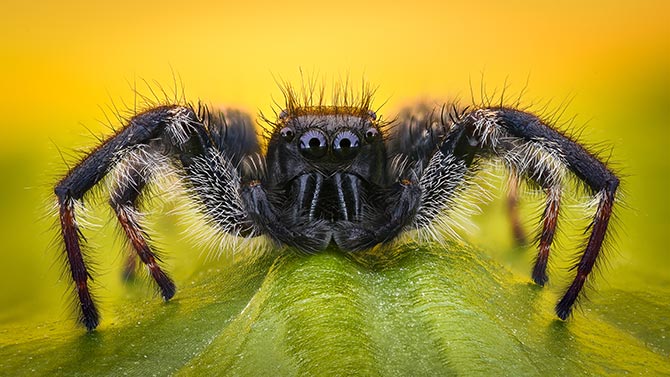
VERY COOL: ‘Jumping Spider Macro’ is what happens when you combine a macro lens with a quality depth of field.
3. Add extension tubes
When you get up close to a subject, your camera can often have trouble focusing. That’s where extension tubes come in – a tube that sits between the body of your camera and your lens.
Basically it helps you get closer to your subject so your camera can focus on it better, particularly handy for non-moving objects like flowers. Not so useful for subjects that will get scared at how close your lens is and fly away.
4. Play with focus stacking
Focus stacking involves taking a series of pictures of the same subject at different focal distances then using post-production to bring together all the different images to create one single ‘in focus’ image.
It’s a way to avoid the pressure of focusing an entire subject, something that’s often difficult in macro photography. When photographing for focus stacking, it’s important to keep in mind that you need to avoid changes in lighting and movement.
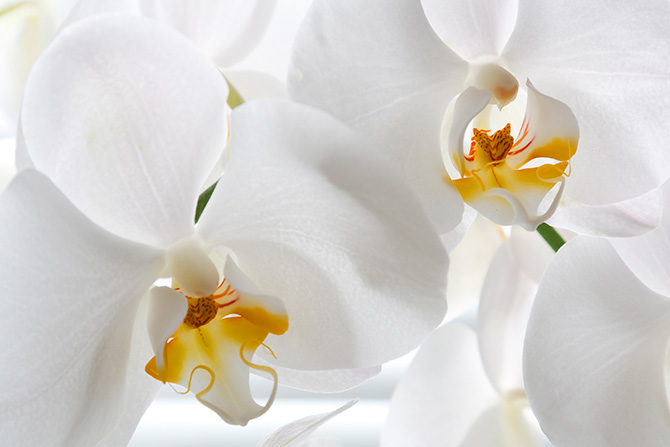
BRIGHT: ‘Pure Orchid Petals’ uses focus stacking to ensure the foreground and the background are all in focus.
5. Keep still
One of the secrets to getting as close as possible to a moving subject like an insect or butterfly is investing in a true macro lens, but even then it’s important to keep still to avoid scaring them away.
Getting a longer (rather than wider) focal length macro lens will help you get closer to your subject. Other options include extension tubes, tele converters or Achromatic filters.
That said, good old fashioned ‘being as still as possible’ is a skill worth practicing and something the best macro photographers take pride in.
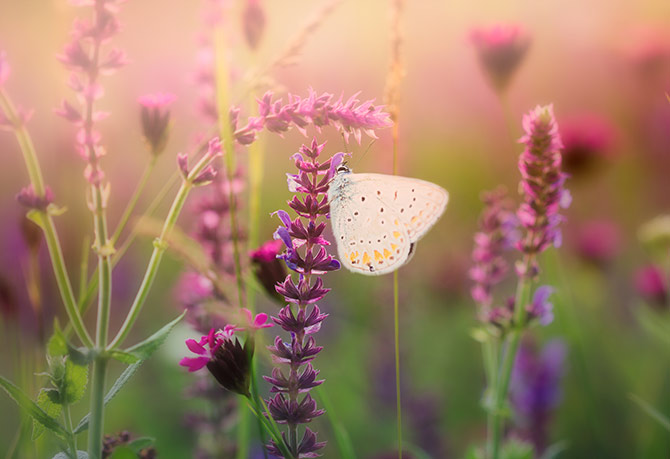
EASY DOES IT: This colourful ‘In The Butterfly Meadow’ photo is the result of much photographic skill and practice.
6. Get your light right
Ever wondered how photographers achieve this art effect, below? It’s essentially called ‘flash lit flower photography’ and the results are often mind blowing.
The team at Adorama Learning Centre recommend the following: a single off-camera flash, twin flashes and flash modifiers. Visit their tutorial to discover more about getting your light right.
Love this style of photography? Discover more beautiful macro photos in our Nature Photography collection.
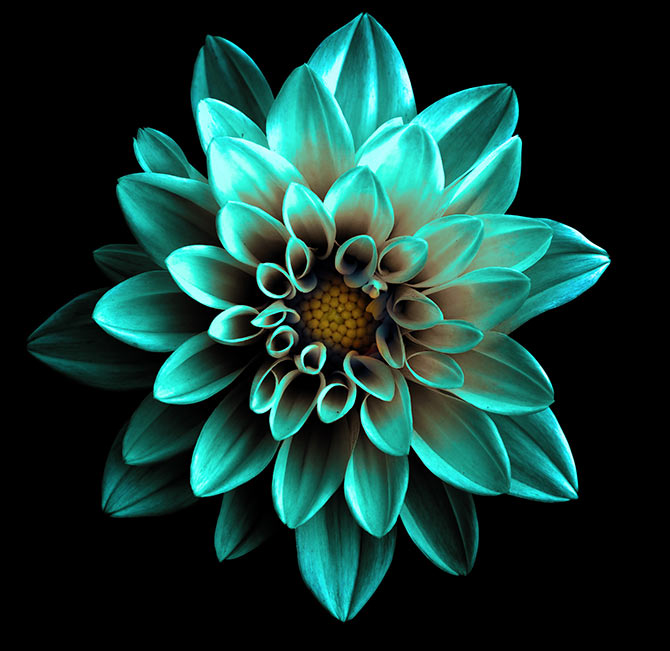
EXQUISITE: The light effect used in ‘Turquoise Dahlia Macro’ transforms the flower into a work of art.
7. Control your subject
We often think of macro photographers as outdoorsy people who spend hours roaming around nature finding that perfect moment and subject to capture.
However, you can also achieve amazing things in a controlled studio environment, particularly with flowers. So don’t be shy about ducking outside, grabbing that thing you want to photograph and bringing it in inside. The results can be stunning, like this Dandelion Dance, below. And as long as it’s not a bumble bee, you’ll be right!
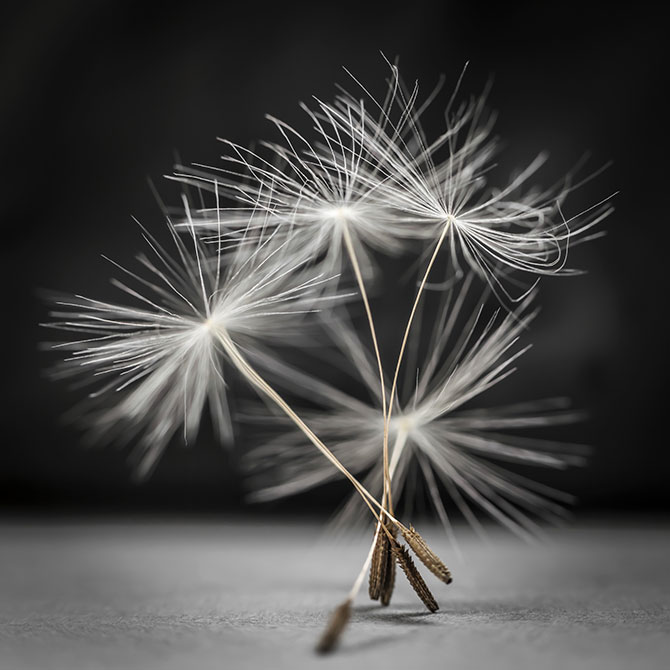
PERFECTION: Use a studio to transform a common subject into something magical like ‘Dandelion Dance’.
8. Macro tips for insect photography
Aside from the obvious, which involves getting up close using some of the camera equipment we’ve highlighted above, when photographing insects it’s important to capture creative angles, vivid colours and plenty of action.
It can take a lot of patience and you’ll have to keep your eyes peeled to find that special insect you’d like to photograph in the first place, but the results are worth it.
Play with angles and, if you can, try capturing the eyes. An insect staring into the soul of an admirer is a powerful thing.
9. Macro tips to capture beautiful butterflies
For the most part, the beauty of a butterfly is a transient concern. They flutter by so quickly, we barely get a chance to admire them. Macro photography solves this problem for us.
According to the butterfly experts at Light Stalking, if you’re keen to photograph butterflies, try heading out in the morning as butterflies tend to move a bit slower when the world is waking up. They suggest using a macro lens with a minimum focal length of 105mm – the longer the better to avoid getting too close, as butterflies are easily spooked.
They also suggest experimenting with depth of field, lighting and – interestingly – where to go. For butterflies you can go out into your garden or a local park, but the best place to play is at a dedicated butterfly house.
10. Macro tips for flower photography
Flowers are a delight to capture through macro photography and a favourite among abstract photographers. The closer to a flower you get the more you reveal, but get even closer and the subject itself distorts itself into something different entirely, becoming a beautiful work of art.
Aside from the general tips we’ve already covered, some flower specific tips include getting down on your knees to get closer to the flower and experiment with perspectives; revelling in the experience by enjoying the inspiring fragrance, colours and shapes; experimenting with complementary and contrasting backgrounds; and isolating your flower subject so it stands out from the crowd.
11. Macro tips for raindrop photography
Simultaneously abstract and real, raindrops appear magical in photography. Capturing raindrops on leaves and flowers is a lot of fun for the outdoor photographer while capturing raindrops on windows is a wonderful opportunity for the home photographer.
To photograph raindrops, use a camera on a tripod so you can get as still as possible and focus on the drops. It may be necessary to switch to manual focus as auto focus will sometimes confuse what the focal point is meant to be.
Shift the camera closer, further, left and right to see how the background looks. Your goal is to get the right colour tone for the background. Then set your aperture to its widest setting so your background is thrown completely out of focus. Voila! Magical raindrops.
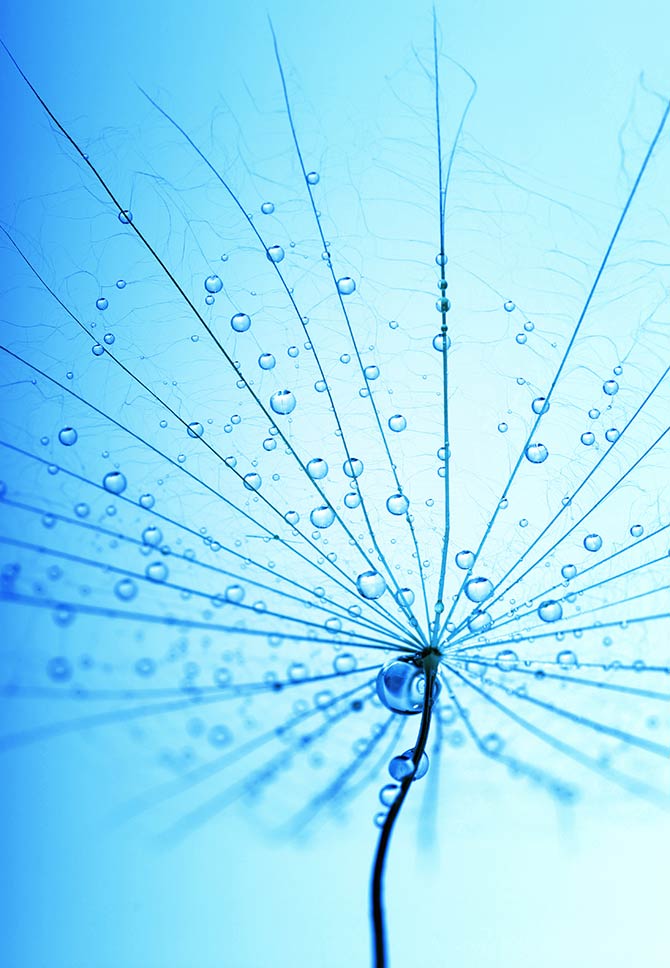
RAINY DAZE: With ‘Droplets’ it’s all about the gorgeous detail of the foreground and the enchanting tone of the background.
12. Channel patience
The key to the genius of macro photography is finding the patience to wait for that perfect shot. The act and art of photography is almost meditative as you are often outdoors on your own and being very quiet. In fact, being among nature is one of the most amazing places you can be for spiritual wellness.
Add a camera to that spiritual journey and the world of Mother Nature awaits, a moment in time to be captured for eternity.

